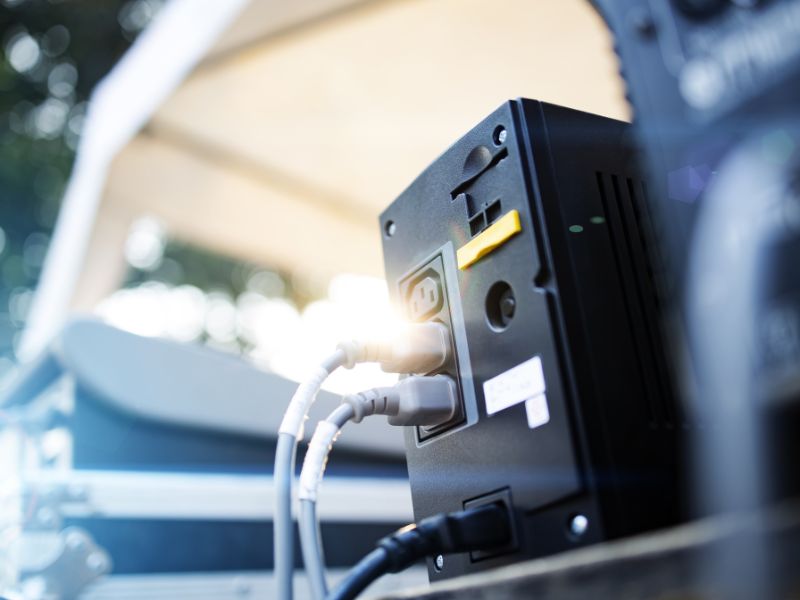How do switched-mode power supplies work?
What is a switched-mode power supply?
Switched-mode power supplies are electronic supplies that incorporate switching regulators to convert electrical power efficiently. They are highly efficient, adaptable and relatively cheap. Nowadays this type of power supplies are one of the most popular standard electronic components on the market. They are used in almost all branches of modern technology, irrespective of application, device type and even the industry. In the last ten years or so, switched-mode power supplies dominated the power supply market. It resulted in changing its shape both from commercial and technical side. It is safe to say that with the introduction of a switched-mode power supply a technological race for efficiency, digitization, reliability, and reduction in the sizes has started.
Types of switched-mode power supplies
There are currently seven basic types of switched-mode power supplies:
- Flyback (two-bar), used in very simple types of power adapters,
- Forward (one-measure), used mainly in welding machines and in power supplies with a power not exceeding several hundred watts,
- Half-bridge, used in computer power supplies with powers up to several hundred watts,
- Full-Bridge, that allows for power transformation even above 1 kW,
- Buck, used to supply a DC voltage lower than the input voltage,
- Boost, used for a DC voltage higher than the input voltage,
- Buck-boost, used to supply a DC voltage with a reversed polarity, higher or lower than the input voltage.

Application of switched-mode power supply
Switched-mode power supply is commonly used in:
- personal computers,
- domestic electronic equipment, such as mobile phones,
- servers,
- power stations,
- security systems,
- railway systems,
- factories and industries for power,
- vehicles.
The switched-mode power supply is also used in most of the battery operated equipment where small sizes and high efficiency are required.
How is switched-mode power supply built?
The switched-mode power supply consists of various basic components, namely:
- input rectifier and filter,
- inverter, which consists of a high frequency signal and switching devices,
- power transformer,
- output rectifier,
- feedback system and circuit control.

How does switched-mode power supply work?
The traditional switched-mode power supply, which is more complex than a linear power supply, works as follows:
- The AC mains voltage is first rectified and then filtered to provide an unregulated high voltage DC bus in order to deliver power to the DC inverter circuit.
- Switchable power transistors in the range from 10 to 100 kHz impose a high voltage and a high frequency AC waveform on the primary transformer, namely input.
- The AC pulse voltage is scaled by the ratio of the number of turns of the transformer to a value that matches the required DC output voltage.
- The secondary AC voltage of the transformer is rectified into pulsating DC voltage.
- The LC output filter averages the pulsating DC voltage to the continuous DC voltage at the output of the power supply.
- The error amplifier compares the DC output voltage with a reference value to adjust the output power at the desired setting.
- The modulator circuit converts the error amplifier signal into a high frequency, pulse width modulated waveform to control the switching power transistors.
The switched-mode power supply designs are typically more compact and use smaller transformers than linear power supplies. This is why they are used in most of the electronic devices with limited space. The switched-mode power supply is highly efficient, uses flexible technology and has high power density. This type of power supply has also its disadvantages. It has a very complex design and uses extra external components, which may result costly and can require more space.


